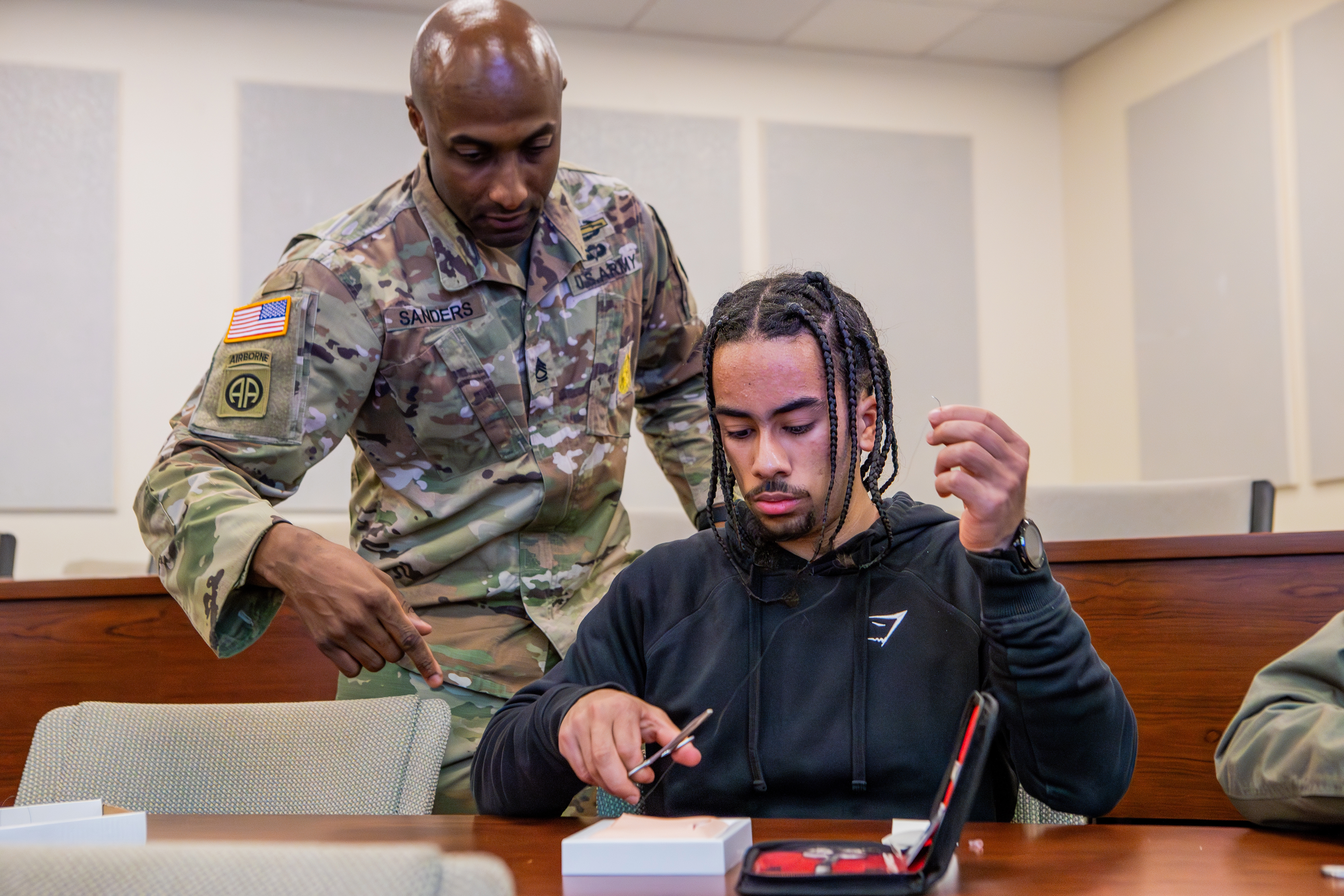
Read time:
Alauni Wright ‘26 wants to go to medical school, but she’s not waiting until graduation to start honing essential skills.
As president of the Minority Association of Pre-Medical Students (MAPS), she’s doing everything she can to prepare for a career in medicine. Her latest endeavor: suturing wounds.
Wright, who is majoring in Neuroscience, helped organize a masterclass in suturing so she and her pre-med classmates could learn the art of stitching injured patients back together. After all, it’s a skill that is likely to be necessary, no matter what type of medicine the students choose to study.
MAPS is a club on campus associated with the Student National Medical Association (SNMA). The organization’s mission is to provide underrepresented pre-medical students with knowledge and experiences that will help them succeed in their pursuit of a medical career.
“We want to build skills that we can take into the medical field,” said Wright, who works as a scribe in the emergency department at a local hospital. “This is a really important skill to have.”
To learn best techniques, the students were instructed by the members of the U.S.Army Healthcare Team from the Richmond Medical Recruitment Station. The soldiers passed out portable suturing kits and walked the Captains through medical scenarios and suturing applications.
“Suturing is so delicate and intricate,” Wright said. “We thought it would be a great interactive way to learn new skills.”
The experience, students said, was an informative and useful hands-on introduction to something they all expect to use at some point.
“I feel like suturing is an important basic skill to have regardless of what we do in the future,” said Megan Berotti, ‘25 Neuroscience and Psychology.
Joy Kanapala, ‘25 Biology, agreed.
“It’s good to know even in case of an emergency. This is a very helpful experience,” she said.
Dr. Gwynne Brown, director of Pre-Health Programs, said the class not only taught an important skill, it also introduced students to possibilities the military offers to medical students.
“On the one hand, it let students get excited about actually working with their hands, but it also provided them with a small glimpse of what it is like to actually do a medical procedure. It also gave the students some exposure to the Army,” she said. “There is a Health Professions Scholarship Program (HPSP) that can pay for medical school (as well as dental and part of vet school), so learning about these types of opportunities and trying to determine whether the military is a good fit for you is important. The gentlemen from the Army did a great job of making everyone comfortable and created a fantastic learning environment.”